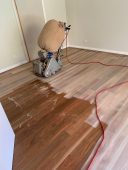Several studies have shown that human exposure to indoor contaminants is an emerging area of health concern, particularly because we now spend most of our time – up to 90 per cent – indoors.
Professor Mark Taylor, of Macquarie University’s Earth and Environmental Sciences, looked at samples of residential indoor dust from 224 homes in Sydney, to measure trace element concentrations and see if there is a potential risk of harm. The samples were part of part of a global citizen science program called ‘DustSafe’, which involves participants sending samples direct from their vacuum cleaners. The samples were analysed using portable X-ray Fluorescence to measure their arsenic, chromium, copper, manganese, nickel, lead, and zinc concentrations.
Potential hazard levels were assessed using United States Environmental Protection Agency’s carcinogenic, non-carcinogenic and Integrated Exposure Uptake Biokinetic model human health risk assessment tools for children and adults. While the samples showed indoor contaminants were within safe levels for adults, the EPA hazard indexes indicate that chromium and lead levels measured in indoor dust may pose a potential significant health risk to children.
One striking finding was that lead values in older parts of the city, particularly the inner west, were noticeably higher. The average age of the homes sampled in this study was 60 years, with around 20 per cent older than 100 years. The study data showed clearly that older homes are more contaminated with lead than new homes, for a variety of reasons. One is lead paint, but residual lead from leaded petrol emissions and other industrial sources are also known sources.
The highest concentrations of lead were found in older houses that have recently been extensively renovated. Older buildings with peeling paint also returned higher lead levels than newer buildings.

Renovations are a major dust source. Image by Mark Taylor
Renovation also appears to be a culprit for chromium contamination, from wood stains used between 1910 and 1970 which contained chromium.
Both chromium and lead can be carcinogenic, neurotoxic, and cause other diseases, even at low exposure levels. Lead can cause neurological damage, decreased cognitive function, increased blood pressure, cardio-vascular disease; and at higher levels seizures, coma and even death. Children are particularly susceptible, and particularly at risk.
Their smaller body size means that less contamination can do more damage. Children are also much more inclined to stick things in their mouths, and ingestion is the highest risk pathway.
There are things you can do about this. Close your doors and windows on windy days, get outside and inside doormats (the first five steps inside the home bring in about 85 per cent of outside contaminants), and have a no-shoes-in-the-house policy.
Water is your friend. Use a wet rag to dust, wash your hands and face regularly, (and your children’s too), get washable rugs and wet mop instead of dry sweeping. Use a vacuum cleaner with a HEPA filter – they cost more, but they work. And finally, keep the kids away while undertaking renovations as much as you can.
The dust and soil data are available to inspect.



